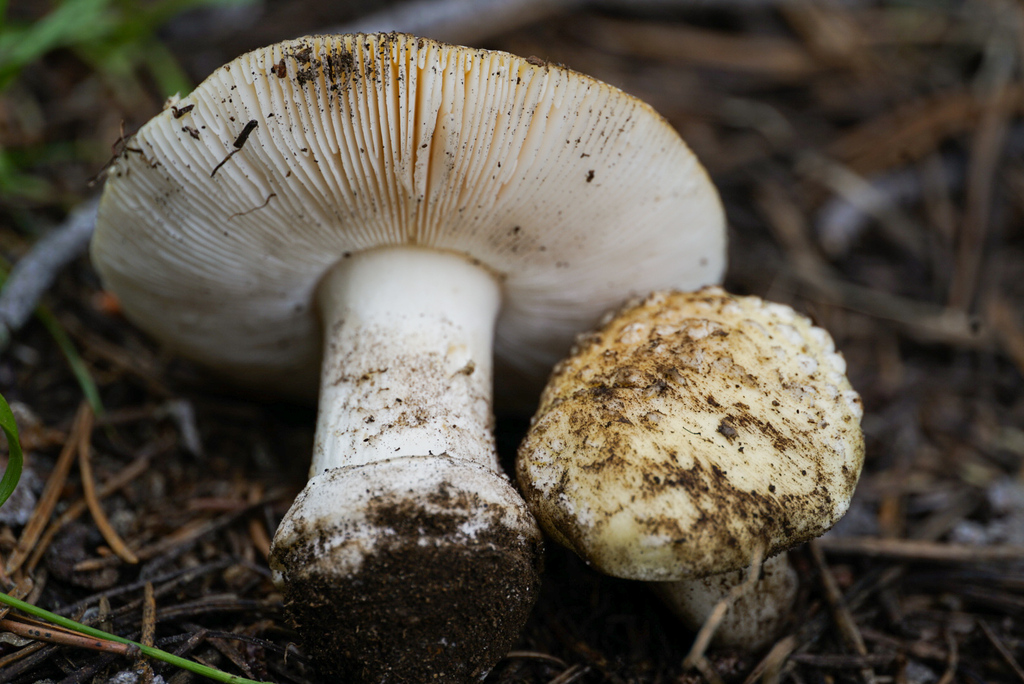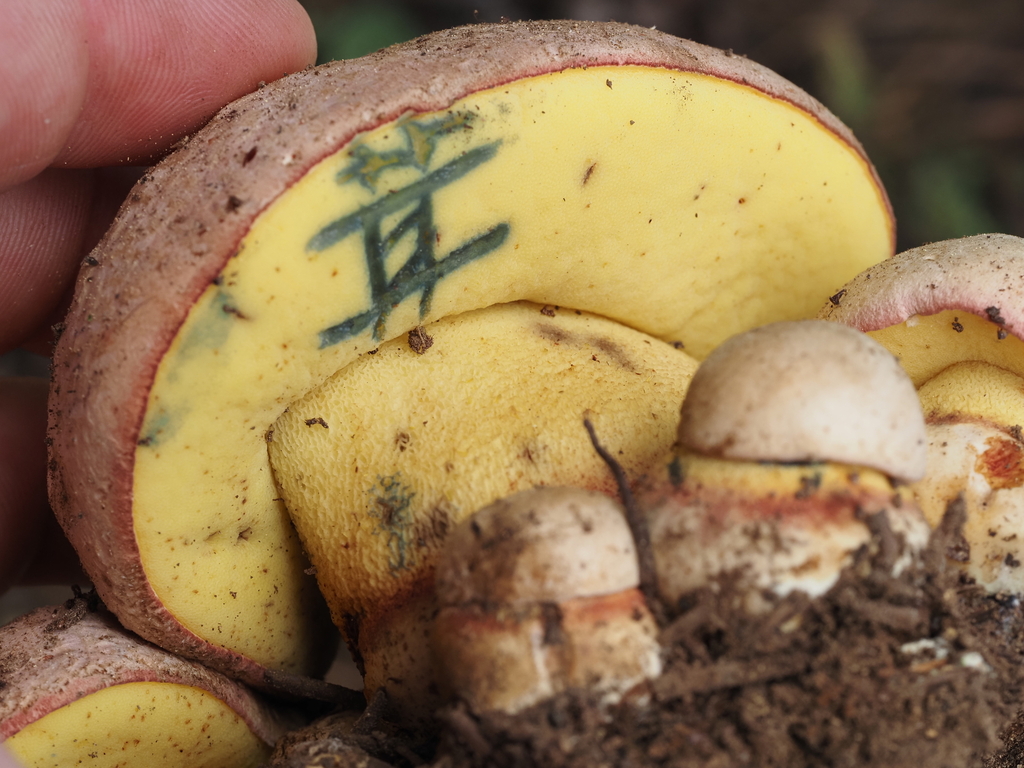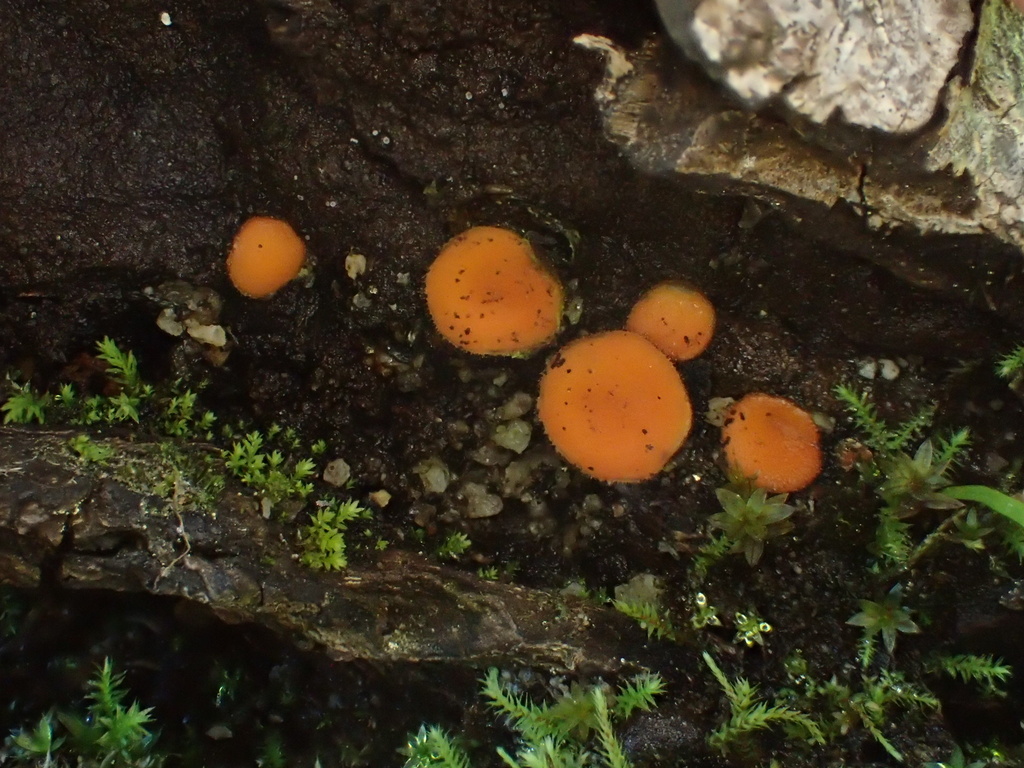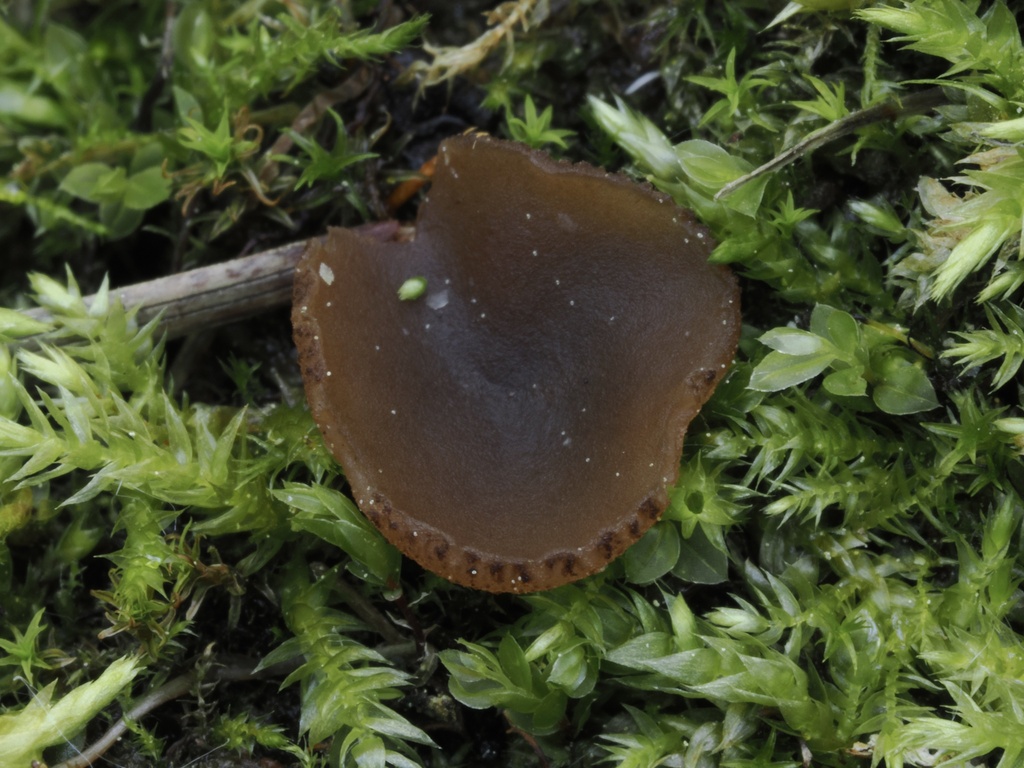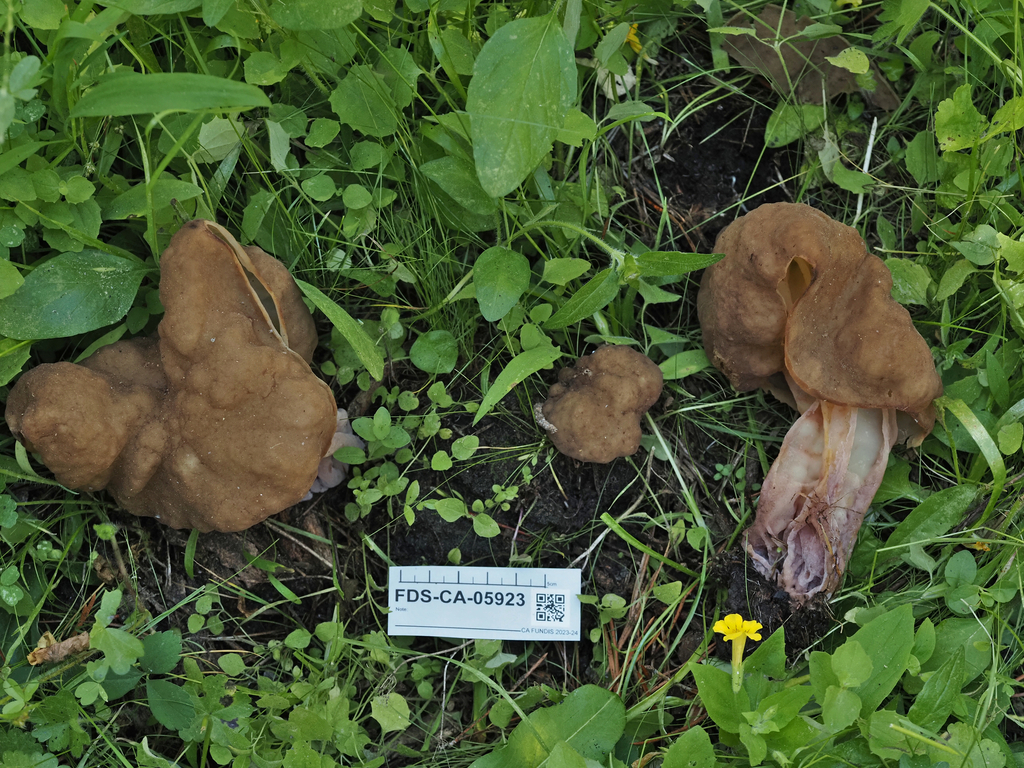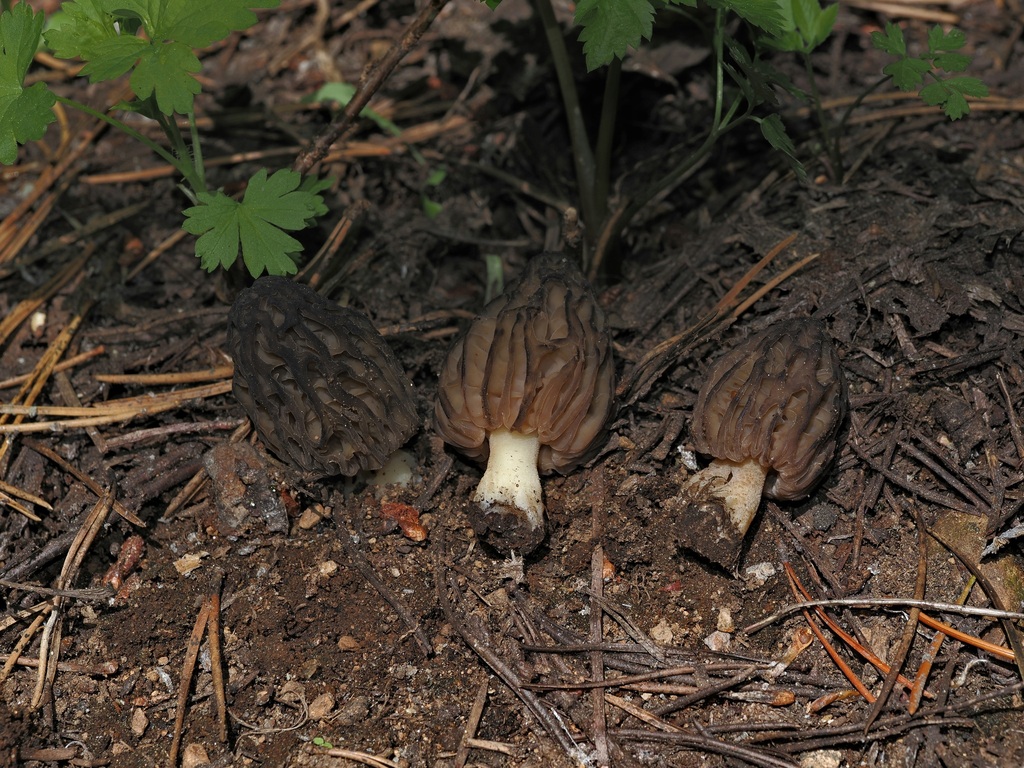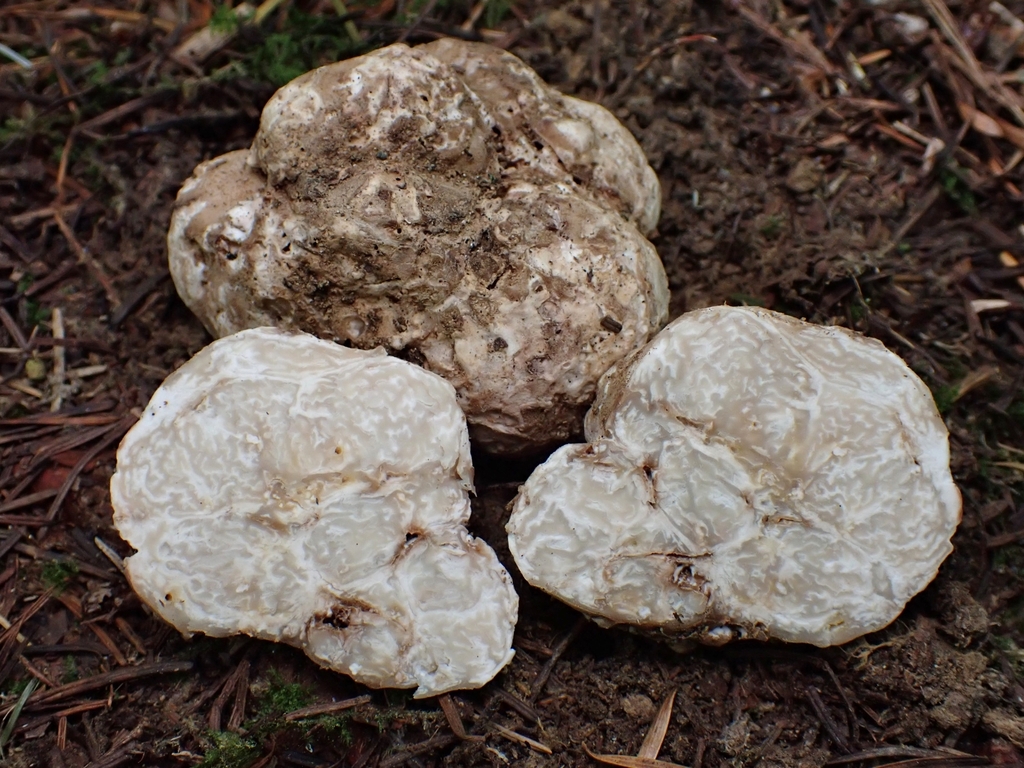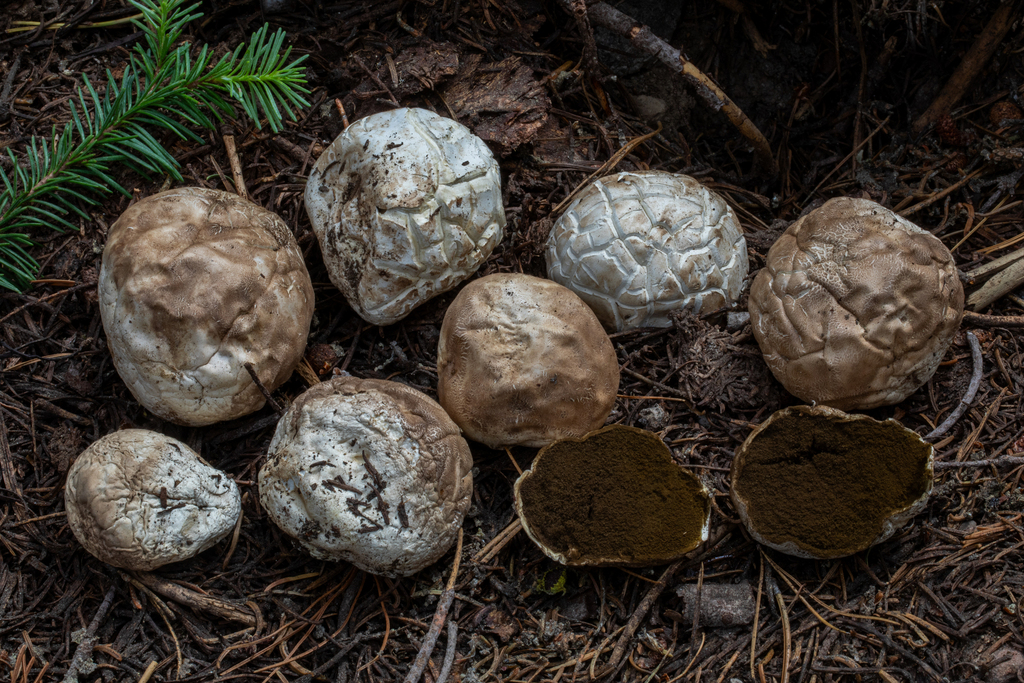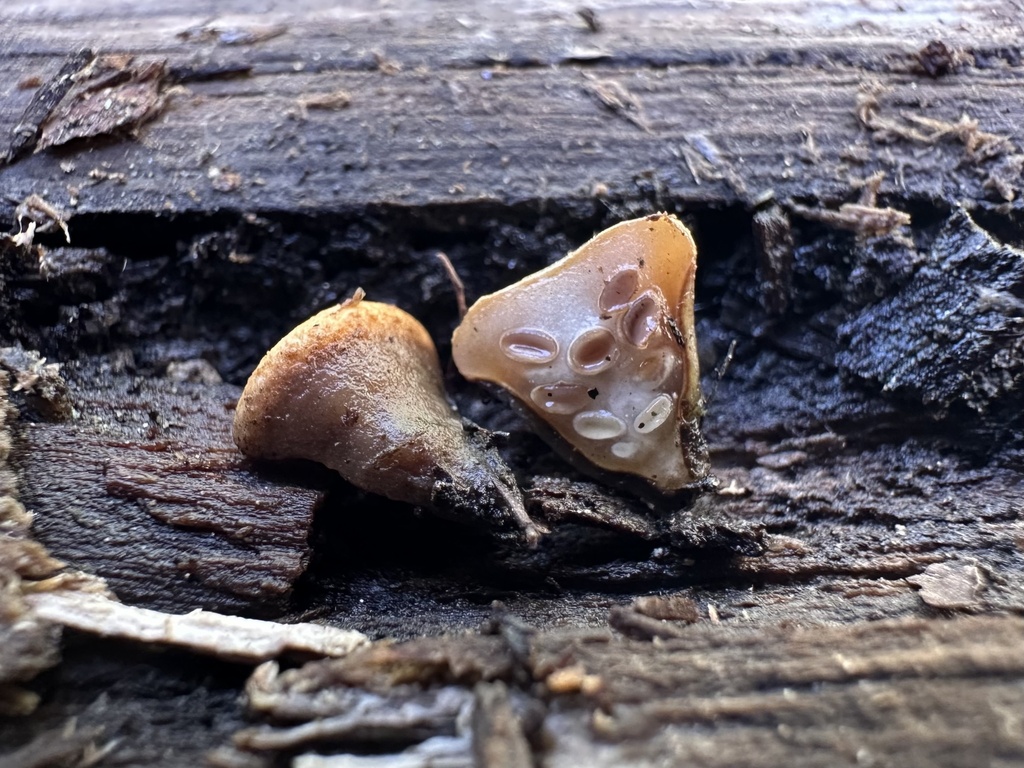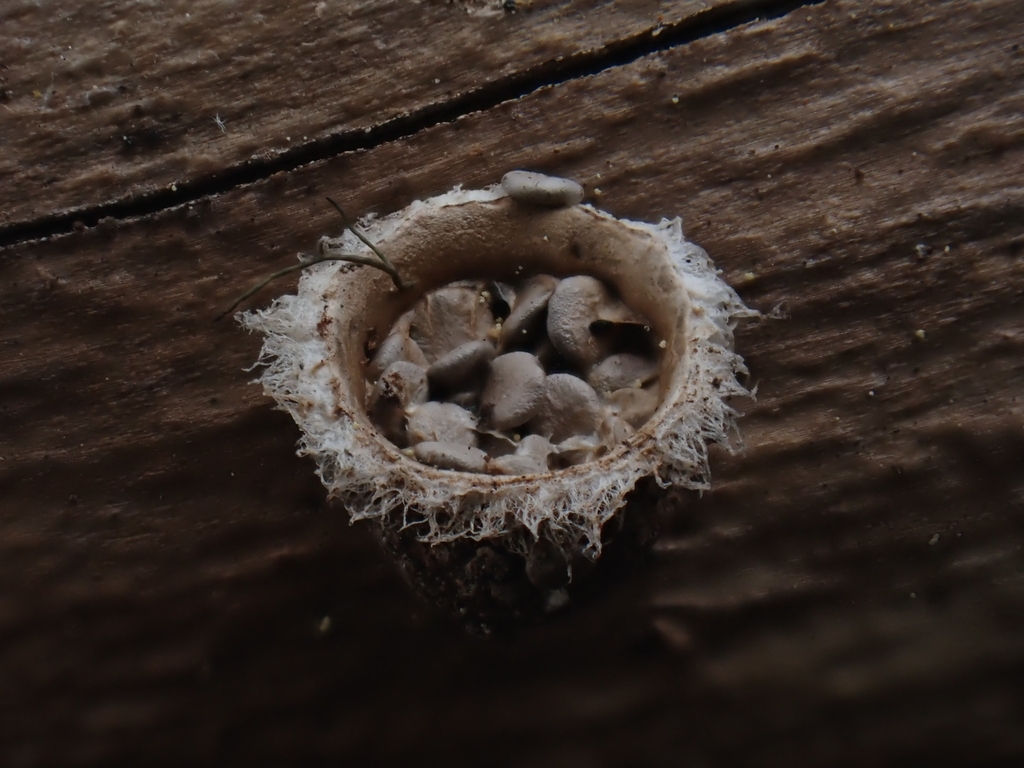FUNDIS Fungal Tissue Sampling for PCR
Harte Singer
Abstract
How to sample dried fungi for PCR amplification
Steps
Sampling guide
Crusts - These are mushrooms that are flat against a substrate. They can have many textures such as pores, teeth, or they can be smooth. In general, you can sample any part of these, but be careful not to dig into the substrate. Sample by scraping a bit of material off with the tweezers if the surface is completely flat.


Tissue Sampling
Find a suitable place to conduct tissue sampling. A hard, nonporous surface that can be wiped clean with rubbing alcohol is ideal. Turn off any fans and close any windows so there is minimal air movement. Wash your hands and gather your materials and mushrooms for sampling.
Set up one of the PCR tube racks and with very clean hands, remove each strip of PCR tubes from its package and close each of the lids before placing the strip into a row of the empty PCR tube rack.
Using a sharpie, label the hinges of each PCR strip using the pattern depicted in the photo. Also label the first tube in each strip from 1-12 going from the top to bottom as depicted. Additionally, you can label the last tube in each strip with the plate number, so if this was plate number 5, the last tube on the right of each strip would be labeled 5. This is not depicted in this photo.

Dip your tweezers into the alcohol and then wipe them using a piece of clean kimwipe. You don't need a whole square and can just rip off a small piece, but make sure to wipe the tweezers thoroughly and repeat this until you are confident they are clean. Alcohol will not destroy DNA, it just helps remove the debris on the tweezer. Most mushrooms don’t make a ton of debris, but be extremely careful with puffballs or any mushroom with a lot of powdery spores that tend to become airborne. It is best to save these specimens for the end of sampling to avoid potentially cross-contaminating
#尊敬的用户,由于网络监管政策的限制,部分内容暂时无法在本网站直接浏览。我们已经为您准备了相关原始数据和链接,感谢您的理解与支持。
https://lh7-us.googleusercontent.com/docsz/AD_4nXc1BX4mbWBeg7qgAJVXJulBGuu3IVd8yPX5jt7DLCFVoJdeoe7MCmQZl9RUwjFqZxqnWynCgrTaBWa5HPWI9z_9eywF4xnHzwYYa5Qs9aeek0zrehWmSyXu5paKovSEKfdREnWq6MFren3HwCBPTrHPZjm6?key=kpL3v5YWkq4GIYO9-B1Asg
Set tweezers down such that the tines do not come in contact with anything while you grab the mushroom.
Remove the lid from the tube rack, then remove the first strip of 8 tubes from the tube rack and place it in the second rack for sampling. The first tube on the left will have 1 written on it and the first hinge will be marked.
Grab a box/bag of mushrooms and enter the accession number into the data entry sheet in the first corresponding cell. Write the tube number back side of the voucher slip (i.e. 1-1, 1-2 … 12-8).
Open the box/bag of mushrooms and either reach in with the tweezer or take out the mushroom and place on a clean surface away from your tubes. Carefully remove a small piece of tissue. You will only need a piece about 1x1mm. Hymenium tissue works best. Gills, pores, gleba, apothecia etc. This tissue has a high density of DNA. It is critical that you only take clean tissue. Any dirt, plant matter, or other contaminants will negatively impact the results. Take care not to cause too much damage to the specimens . Just take your time and take as little as you can. Too much tissue will negatively impact the results . Make sure you do this operation away from your tube rack to minimize the chance of cross contamination. T he amount depicted in these photos is about the maximum amount of tissue you want to use
#尊敬的用户,由于网络监管政策的限制,部分内容暂时无法在本网站直接浏览。我们已经为您准备了相关原始数据和链接,感谢您的理解与支持。
https://lh7-us.googleusercontent.com/docsz/AD_4nXewaekS0JVaIZ-pffdrFG8EEabd_MdQZj2FuIzUnTraFUyFtsJsb-k8TTxDC4ZV9Vyt8HtYXRaKcfjxqzcaeUq_PPA7a8NoKr4W6NW7tMuIP_IvFpUzSZZ4AlOcZqj7NiP9MB2H7ABDJjdglZBKItxRUr5c?key=kpL3v5YWkq4GIYO9-B1Asg
#尊敬的用户,由于网络监管政策的限制,部分内容暂时无法在本网站直接浏览。我们已经为您准备了相关原始数据和链接,感谢您的理解与支持。
https://lh7-us.googleusercontent.com/docsz/AD_4nXfvKYejnjlJ35pdTD7UoHhIa3CD4GM1q8yeU82Us2vqnc3P2ODZuq_eqWNVDicQltLDy2dzwAqQZuxIdj7U2VJySc89SZkFkoJch3NHsU6vNGl0Yh6wpMDY3E54rxj-y7Iu5UbV8Am4LwrcnCaJQOFgr0LB?key=kpL3v5YWkq4GIYO9-B1Asg
Place the tissue into the open tube and release it, or gently tap/wipe the tines inside the tube. Remove the tweezer and place it aside to be cleaned and close the cap. Static electricity can make samples stick to the sides of the tubes or make the bits of mushroom behave in a way you dont expect. Be mindful in your movements.
#尊敬的用户,由于网络监管政策的限制,部分内容暂时无法在本网站直接浏览。我们已经为您准备了相关原始数据和链接,感谢您的理解与支持。
https://lh7-us.googleusercontent.com/docsz/AD_4nXf2tYza0E7FehZZ0PD5q7FN2rI-NT1dgrC7lssS9n-XDIgLDWfxJoOj2rnhsExKc-7OH-5adBpA6WgMF1dIwnH40vOxfol5NfyEBz4T1LSGN44KqspAzNrJhT6WbcWSeEy0RkPprtqIirBkHD6sWTnmnOmo?key=kpL3v5YWkq4GIYO9-B1Asg
Clean your tweezers and proceed with the next specimen.
Place each completed strip back in its row in the original tube rack and remove the next strip of tubes for sampling.
